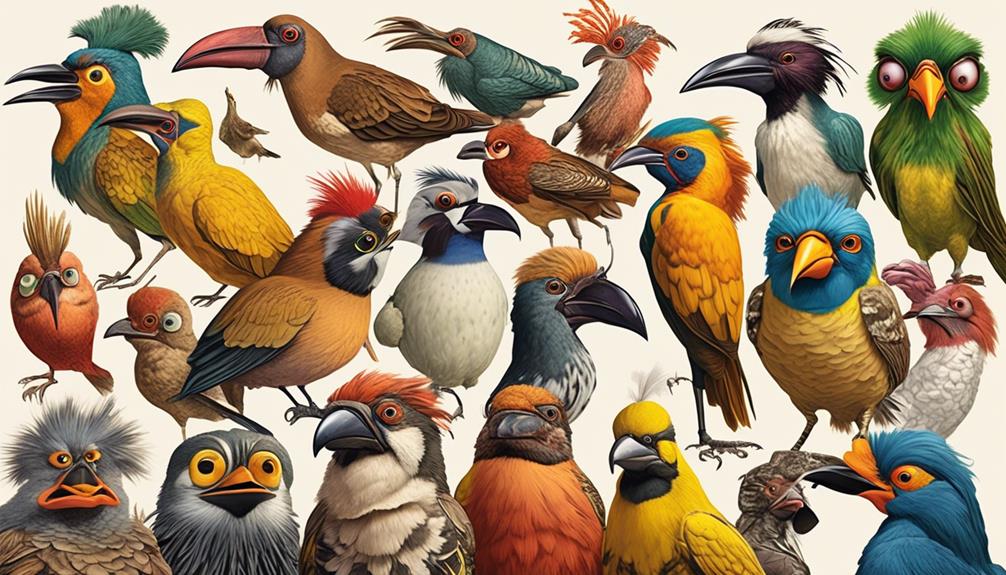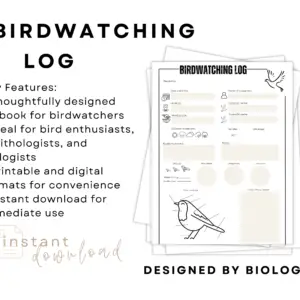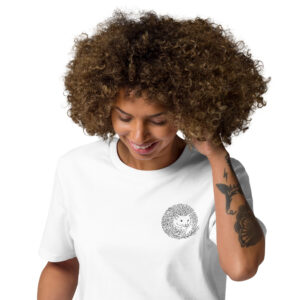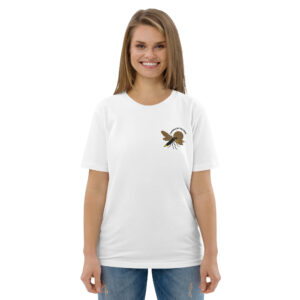Prepare yourself to be introduced to a world where beauty comes in unconventional forms. Get ready to meet the ugliest birds in the world.
From the peculiar Muscovy Duck with its unattractive red caruncles and black patches on its face, to the ominous Andean Condor, known for its scavenging habits and association with death, these birds possess a distinct allure.
And that’s just the tip of the feathered iceberg. With the Eastern Wild Turkey weighing in as the heaviest member of its order and the Cinereous Vulture claiming the title of the largest old-world vulture, there’s no shortage of peculiarities to explore.
So, brace yourself for an eye-opening journey into the world of ugly birds, where each species tells a unique tale of survival and adaptation.
Muscovy Duck: Cairina Moschata
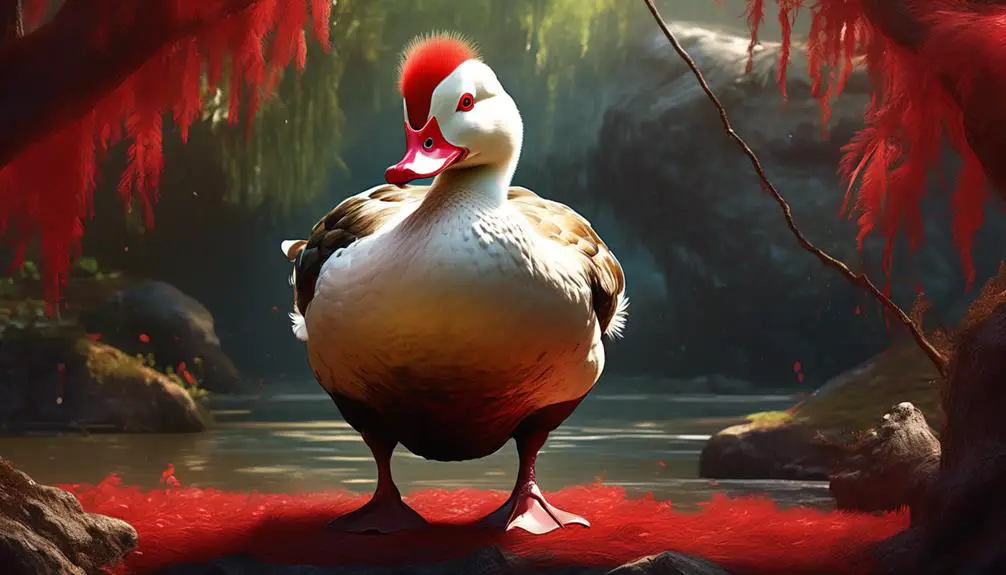
The Muscovy Duck, scientifically known as Cairina Moschata, is a large bird found in the Americas, Europe, and other regions. This avian species is notorious for its unattractive features, which include red caruncles, black patches on the face, and a black and pink bill.
The Muscovy Duck is a hefty creature, weighing up to 15 pounds. It possesses a distinctive appearance that sets it apart from other ducks. The red caruncles, fleshy growths on the face, contribute to its unsightly appearance. These caruncles are especially prominent in males, who display them more prominently than females. Alongside the caruncles, the black patches on the face create a stark contrast against the duck’s overall appearance. The bill, which is black and pink, adds to its unique and unappealing appearance.
Despite its unattractive features, the Muscovy Duck has managed to thrive in various regions, captivating observers with its distinct appearance.
Andean Condor: Vultur Gryphus
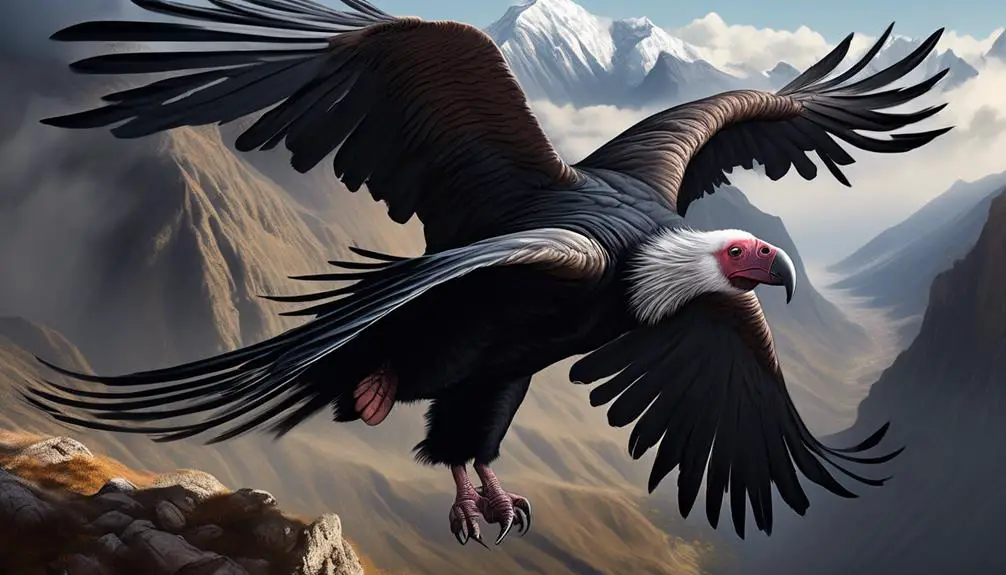
With its impressive size, distinct black plumage, and majestic wingspan, the Andean Condor, scientifically known as Vultur gryphus, stands as the largest flying bird in the world. Found in South America, specifically in the Andes mountains and Pacific coasts, this magnificent creature symbolizes death and is a scavenger. The male Andean Condor displays a striking appearance with black plumage and white feathers at the neck, as well as white patches on its wings. To provide a visual representation of the Andean Condor’s features, here is a table:
| Characteristics | Appearance |
|---|---|
| Size | Impressive |
| Plumage | Distinct black |
| Wingspan | Majestic |
| Habitat | Andes mountains and Pacific coasts |
The Andean Condor’s remarkable presence in the sky captures attention and awe. Its wingspan, measuring up to 10.5 feet, allows it to soar gracefully through the air. This bird’s large size, with males weighing up to 33 pounds, further accentuates its grandeur. The Andean Condor’s black plumage contrasts with the white feathers on its neck and wings, creating a striking visual display. As you witness the Andean Condor glide through the sky, its size and distinct appearance leave an indelible impression, making it one of the most captivating yet unconventional creatures in the avian world.
Eastern Wild Turkey: Meleagris Gallopavo
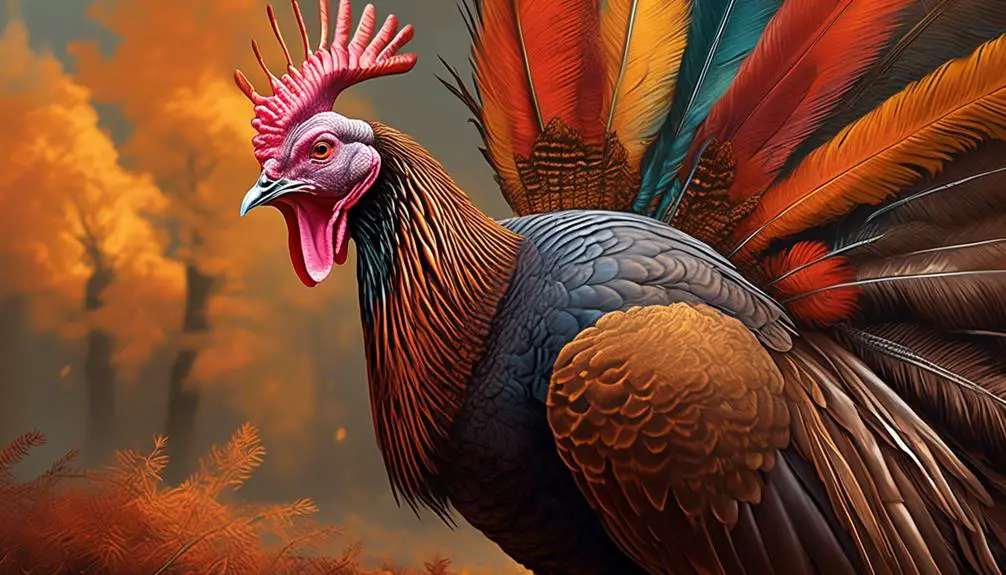
Continuing our exploration of fascinating avian species, let’s now turn our attention to the Eastern Wild Turkey, scientifically known as Meleagris gallopavo. This captivating bird presents a striking contrast to the impressive presence of the Andean Condor. Found in North America, the Eastern Wild Turkey is the heaviest member of the Galliformes order. Its feathers are predominantly gray or black, while the head boasts a striking shade of red.
Males are larger and more colorful than females, with their vibrant displays serving as a means to attract mates. These majestic birds are known for their distinctive gobbling calls, which echo through the forests during breeding season. The Eastern Wild Turkey primarily inhabits wooded areas, where they forage for food such as acorns, seeds, insects, and small reptiles. With their strong legs and muscular bodies, they’re excellent runners and can take flight when necessary.
Despite their somewhat unattractive appearance, the Eastern Wild Turkey is a remarkable species that has managed to thrive in its native habitat.
Cinereous Vulture: Aegypius Monachus
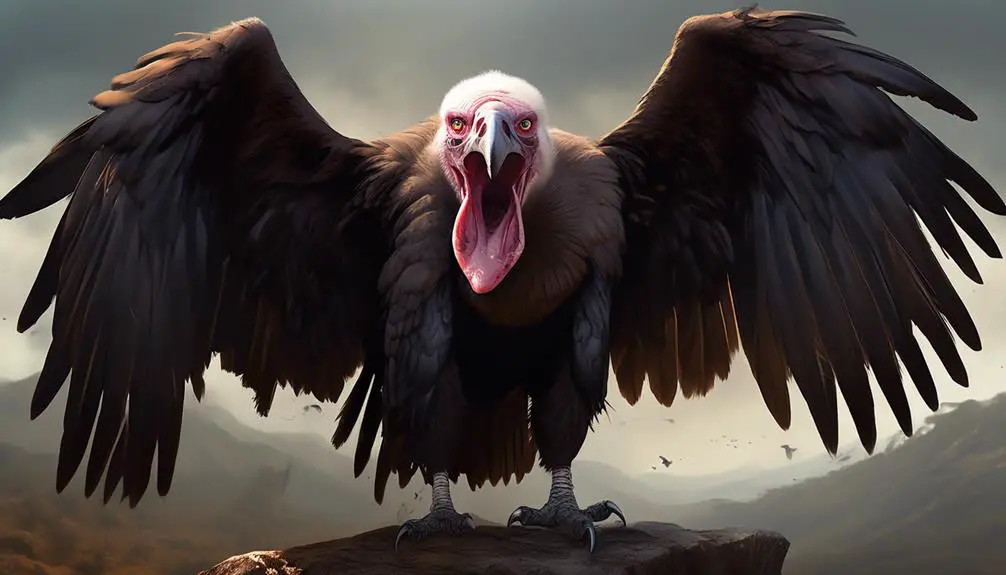
The Cinereous Vulture, scientifically known as Aegypius Monachus, is a remarkable and intriguing bird species found in Europe and Asia. Belonging to the Accipitridae family, it is the largest old-world vulture and the largest in its family. With a gray head and dark brown feathers, this vulture possesses a majestic presence. Its wingspan can reach up to 3 meters, allowing it to soar through the skies with ease. The Cinereous Vulture primarily feeds on carrion, playing a crucial role in the ecosystem as a scavenger.
To emphasize the unique characteristics of the Cinereous Vulture, let’s take a closer look at its physical attributes:
| Attribute | Description |
|---|---|
| Size | Largest old-world vulture and largest in its family |
| Head | Gray in color |
| Feathers | Dark brown plumage |
| Wingspan | Up to 3 meters |
This impressive bird species has adapted to its environment over time, allowing it to thrive in diverse habitats ranging from mountainous regions to open plains. Despite its somewhat unattractive appearance, the Cinereous Vulture plays a vital role in maintaining the balance of nature by efficiently disposing of carcasses and preventing the spread of diseases. Its presence in the skies serves as a reminder of the intricate web of life that exists in our world.
Marabou Stork: Leptoptilos Crumenifer
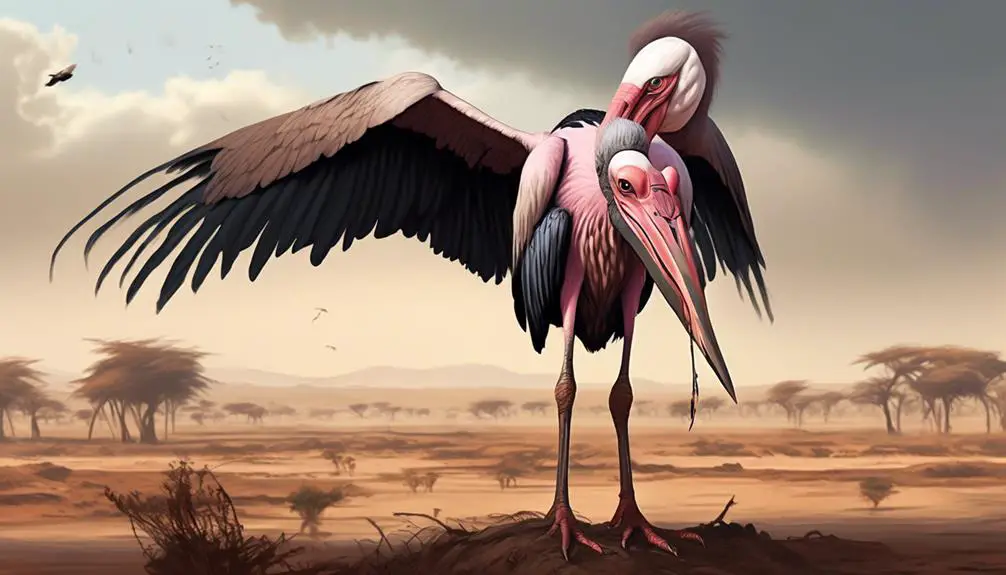
The Marabou Stork, scientifically known as Leptoptilos crumenifer, is a large bird found in Africa that’s characterized by its unique appearance and scavenging behavior. This impressive avian species can reach a weight of up to 20 pounds, making it one of the heaviest birds in the world. Its black wings and plumage contrast starkly with its skinny legs and white hair, giving it a distinct and somewhat grotesque appearance.
One of the most notable features of the Marabou Stork is its bare head and neck, which are covered in wrinkled skin. This adaptation allows the bird to easily clean off any blood or other substances it may encounter while scavenging. It possesses a long, pointed bill that’s well-suited for tearing apart carcasses and extracting any remaining meat. In addition to its scavenging habits, the Marabou Stork also preys on small mammals, reptiles, and fish.
The Marabou Stork is often found near bodies of water, such as rivers, lakes, and swamps, where it can easily access its preferred food sources. Despite its unconventional appearance, this bird plays an important role in its ecosystem by cleaning up carrion and helping to control populations of disease-carrying organisms.
Sri Lanka Frogmouth: Batrachostomus Moniliger
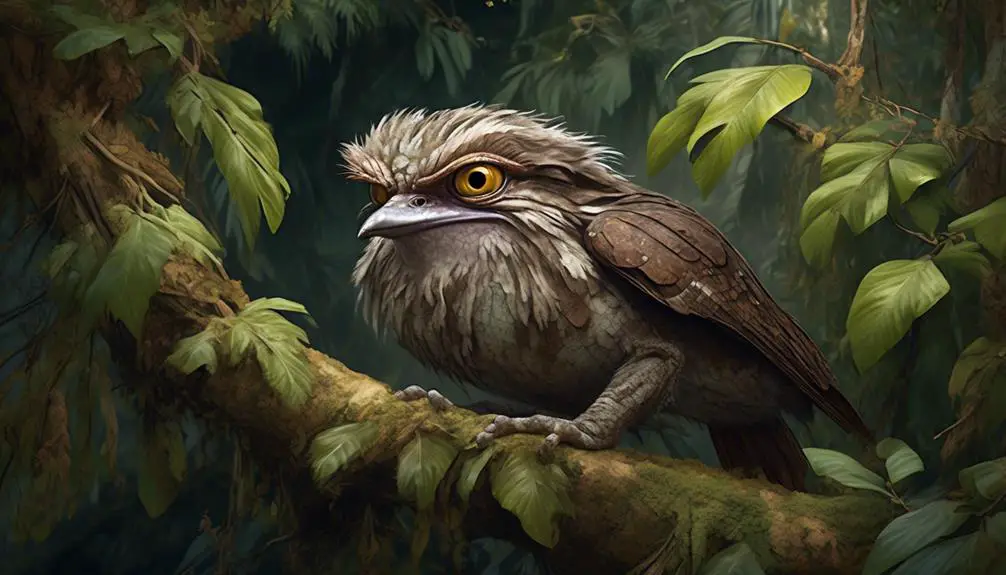
What unique characteristics define the Sri Lanka Frogmouth, scientifically known as Batrachostomus moniliger?
This unusual-looking avian is found in India and Sri Lanka and is part of a group of nocturnal birds known as the frogmouth.
The Sri Lanka Frogmouth is known for its exceptional camouflage, blending seamlessly with its surroundings due to its brownish color that resembles dried leaves.
With a body length of about 22 to 24 centimeters and a wingspan of 40 to 45 centimeters, the Sri Lanka Frogmouth has a compact size.
Its large head features a wide, hooked beak that’s ideal for capturing insects and small vertebrates.
The bird’s facial disc, similar to that of an owl, aids in sound localization.
Its plumage is mottled with various shades of brown and gray, further enhancing its camouflage.
The Sri Lanka Frogmouth has large, forward-facing eyes that provide excellent night vision, allowing it to forage for food in low light conditions.
Vulturine Guineafowl: Acryllium Vulturinum
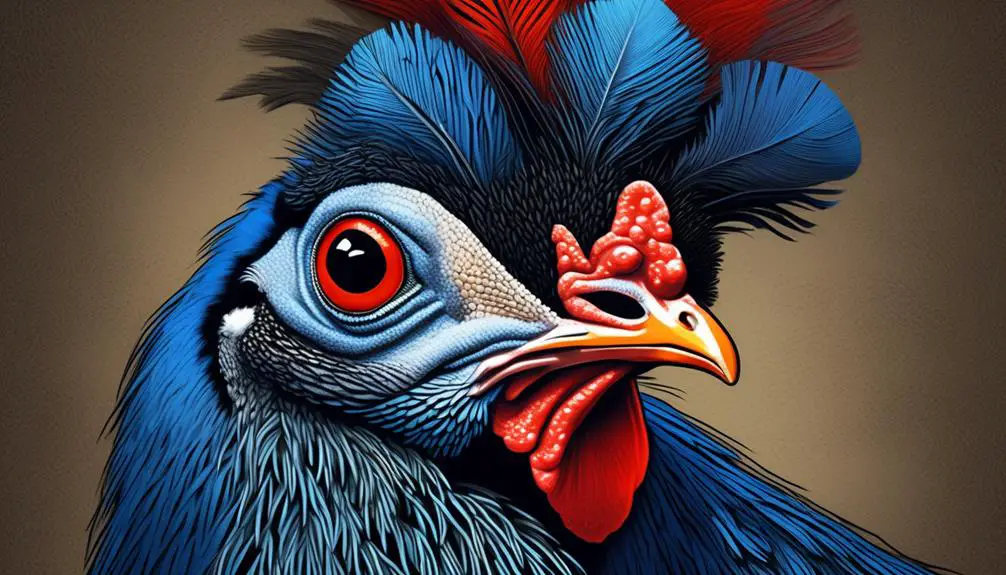
The Vulturine Guineafowl, scientifically known as Acryllium vulturinum, possesses a unique appearance and features that set it apart from other birds. Its striking red eyes, blue face, and blue with white hackles make it easily recognizable.
This species is primarily found in Central Africa and the Northeast, inhabiting a range of habitats including grasslands and open woodlands.
In terms of behavioral characteristics, the Vulturine Guineafowl is known for its social nature, often forming large flocks and engaging in communal roosting and breeding behaviors.
Unique Appearance and Features
With its vibrant blue face, striking red eyes, and elegant blue and white hackles, the Vulturine Guineafowl (Acryllium vulturinum) stands out among its avian counterparts in Africa. This unique bird belongs to the Numididae family and is primarily found in Central Africa and the Northeast.
The Vulturine Guineafowl has a slender body covered in black feathers, with a long, curved neck and a distinctive crest on its head. Its bright blue face is adorned with red eyes that add to its distinct appearance. The blue and white hackles on its neck give it an elegant and regal look.
These features make the Vulturine Guineafowl easily recognizable and set it apart from other birds in its habitat.
Habitat and Distribution
The Vulturine Guineafowl, Acryllium vulturinum, is predominantly found in Central Africa and the Northeast, occupying a variety of habitats across this region. These unique birds are commonly found in open grasslands, savannas, and scrublands, where they can forage for food and find suitable nesting sites. They’ve also been known to inhabit agricultural areas and even urban environments.
Their distribution extends from South Sudan and Ethiopia in the north, down to Tanzania and Mozambique in the south. However, their population is generally concentrated in Kenya and Somalia. Vulturine Guineafowl thrive in these habitats due to the availability of suitable vegetation and water sources, which are essential for their survival.
Their ability to adapt to different habitats has allowed them to maintain a stable population in their range despite the threats they face from habitat loss and hunting.
Behavioral Characteristics
Having explored the habitat and distribution of the Vulturine Guineafowl, let’s now delve into their fascinating behavioral characteristics.
These birds are highly social and live in large groups called coveys, which can consist of up to 50 individuals. They’re known for their elaborate courtship displays, where males fan their long, white-tipped tail feathers and strut around the females, emitting loud, resonating calls.
Vulturine Guineafowl are diurnal and spend their days foraging for food on the ground. They’ve a varied diet that includes seeds, fruits, insects, and small vertebrates. When threatened, they’ll emit a loud, piercing alarm call and take flight, using their strong wings to swiftly escape predators.
These birds are also known for their strong sense of hierarchy within their coveys, with dominant individuals leading the group.
Greater Adjutant: Leptoptilos Dubius
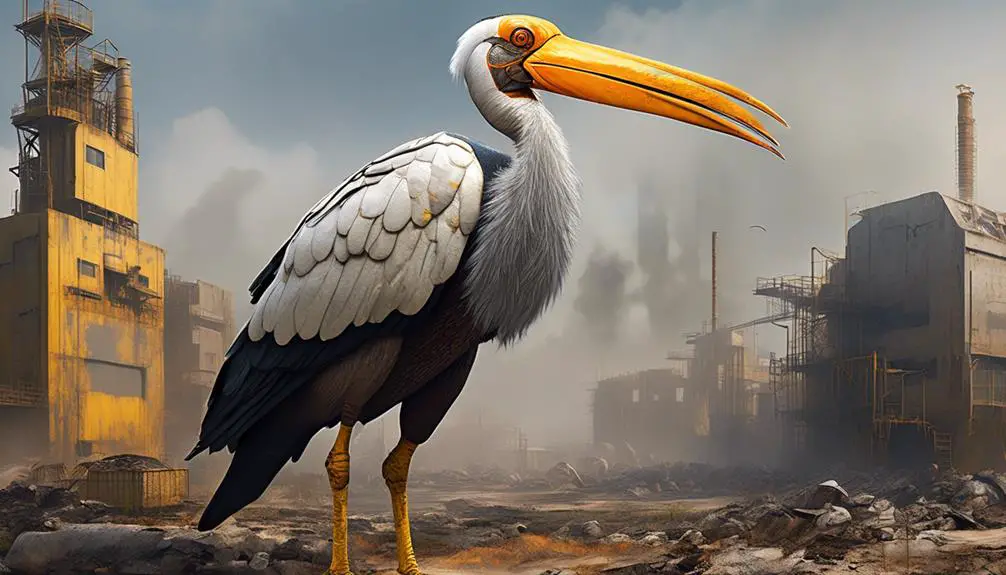
The Greater Adjutant, scientifically known as Leptoptilos dubius, is one of the largest storks in the world. This massive bird can reach a height of 1.5 meters and has a wingspan of up to 2.8 meters. It is primarily found in Asia, particularly in the countries of India, Bangladesh, and Cambodia.
The Greater Adjutant has a unique appearance that sets it apart from other storks. It has a bald head, with a pinkish hue, and a long, thick beak that is yellow in color. Its neck is long and slender, leading to a bulky body covered in dark feathers. The wings are broad and dark, contrasting with the lighter color of the body. The legs are long and sturdy, allowing the Greater Adjutant to wade through shallow water and walk on land with ease.
To give you a better idea of the Greater Adjutant’s physical characteristics, here is a table:
| Physical Characteristics | Description |
|---|---|
| Height | 1.5 meters |
| Wingspan | Up to 2.8 meters |
| Head | Bald and pinkish |
| Beak | Long, thick, and yellow |
| Neck | Long and slender |
| Body | Bulky and covered in dark feathers |
| Wings | Broad and dark |
| Legs | Long and sturdy |
Despite its less-than-attractive appearance, the Greater Adjutant plays an important role in its ecosystem. It feeds on carrion and waste, helping to clean up the environment. Conservation efforts are underway to protect this unique and majestic bird from habitat loss and pollution, ensuring its survival for future generations to appreciate.
Saddle-Billed Stork: Ephippiorhynchus Senegalensis
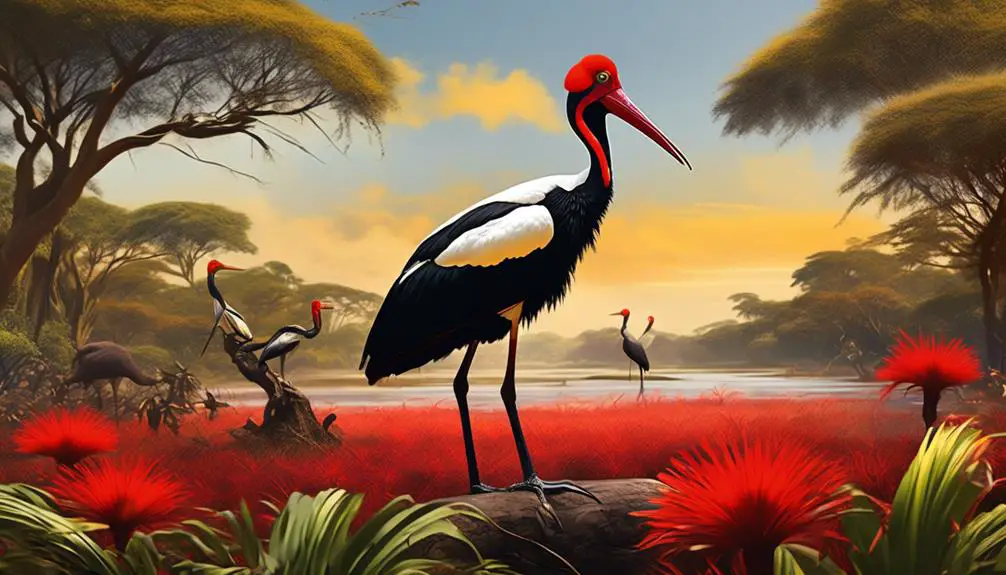
Continuing our exploration of unattractive yet fascinating birds, let’s now turn our attention to the Saddle-Billed Stork, scientifically known as Ephippiorhynchus senegalensis. This magnificent bird is found in Africa, with a widespread distribution across Sub-Saharan Africa. The Saddle-Billed Stork is a huge avian species, standing at an impressive height of 5 feet and boasting a wingspan of up to 9 feet.
Its distinctive plumage features a striking combination of black and white, with a glossy sheen that gives it an iridescent appearance.
One of the most remarkable features of the Saddle-Billed Stork is its long, downward-curved beak, which can measure up to 14 inches in length. The beak is black in color, except for a vibrant red patch near the base, which adds a splash of color to its otherwise monochromatic appearance. Its eyes also contribute to its unique aesthetic, as they’re a striking shade of red.
In terms of behavior, the Saddle-Billed Stork is primarily a solitary bird, often seen wading through wetlands and shallow waters in search of prey. Its diet mainly consists of fish, frogs, and small reptiles, which it catches using its sharp beak.
Despite its unattractive appearance, this stork plays a vital role in maintaining the delicate balance of ecosystems in Africa.
Wood Stork: Mycteria Americana
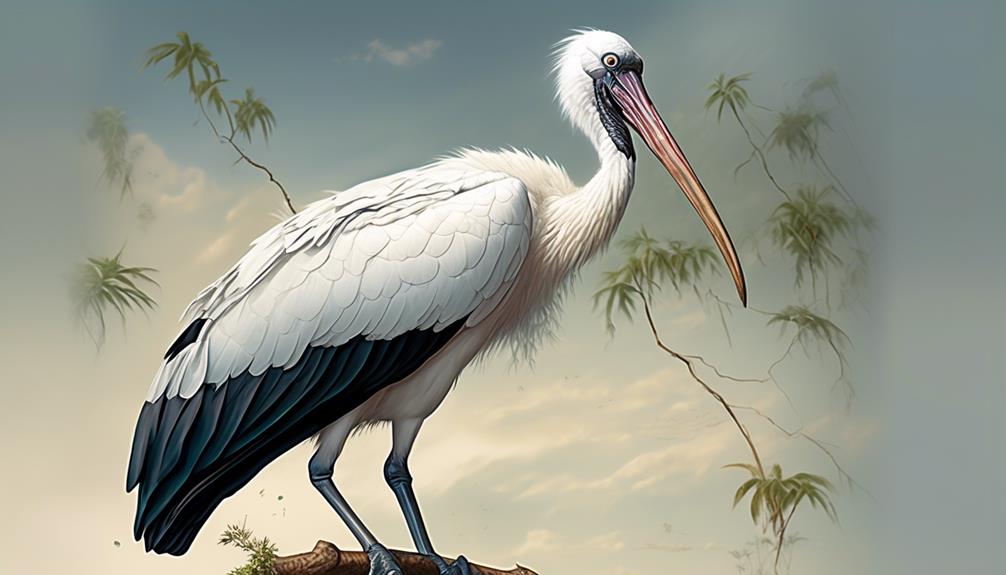
The Wood Stork, scientifically known as Mycteria Americana, is a unique bird with a distinctive appearance. Its head and face may appear bruised and bare, adding to its unattractive features. With a black bill, legs, and tail, this species can be found in various parts of the Americas, including North, Central, and South America.
Understanding the Wood Stork’s physical characteristics, habitat, distribution, and conservation status will shed light on why it’s considered one of the ugliest birds in the world.
Unique Physical Features
With its bruised and bare head and face, the Wood Stork (Mycteria americana) possesses unique physical features that distinguish it from other avian species. This large bird, native to North, Central, and South America, stands out with its distinctive appearance.
The Wood Stork has a black bill, legs, and tail, which contrast sharply against its white plumage. Its head and face lack feathers, giving it a rough and weathered appearance. The plumage on its body isn’t only white but also has a slightly mottled appearance, adding to its unique look.
These physical features make the Wood Stork instantly recognizable and unlike any other bird species.
Habitat and Distribution
Coming from its unique physical features, let’s now explore the habitat and distribution of the Wood Stork (Mycteria americana), a large avian species native to North, Central, and South America.
The Wood Stork is primarily found in wetland habitats such as marshes, swamps, and freshwater ponds. It’s commonly seen in the southeastern United States, including Florida, Georgia, and South Carolina. The species also extends its range to parts of Central and South America, including Mexico, Belize, Colombia, and Brazil.
Wood Storks are highly dependent on these wetland environments for foraging, nesting, and roosting. They feed on fish, insects, and crustaceans found in shallow waters. Due to habitat loss and degradation, the Wood Stork population has faced declines in certain areas, emphasizing the importance of conserving their crucial wetland habitats.
Conservation Status
The conservation status of the Wood Stork (Mycteria americana) is a topic of concern due to habitat loss and degradation, which has led to population declines in certain areas.
This large bird, native to North, Central, and South America, has a distinctive appearance with a bruised and bare head and face, complemented by a black bill, legs, and tail. The Wood Stork’s preferred habitats include wetlands, marshes, and swamps, where it feeds on fish, frogs, and insects.
However, these habitats are being threatened by urbanization, agriculture, and water management practices. As a result, the Wood Stork population has experienced declines in certain regions, leading to its classification as a species of concern by conservation organizations.
Efforts are being made to protect and restore the Wood Stork’s habitat to ensure its long-term survival.
Southern Ground Hornbill: Bucorvus Leadbeateri
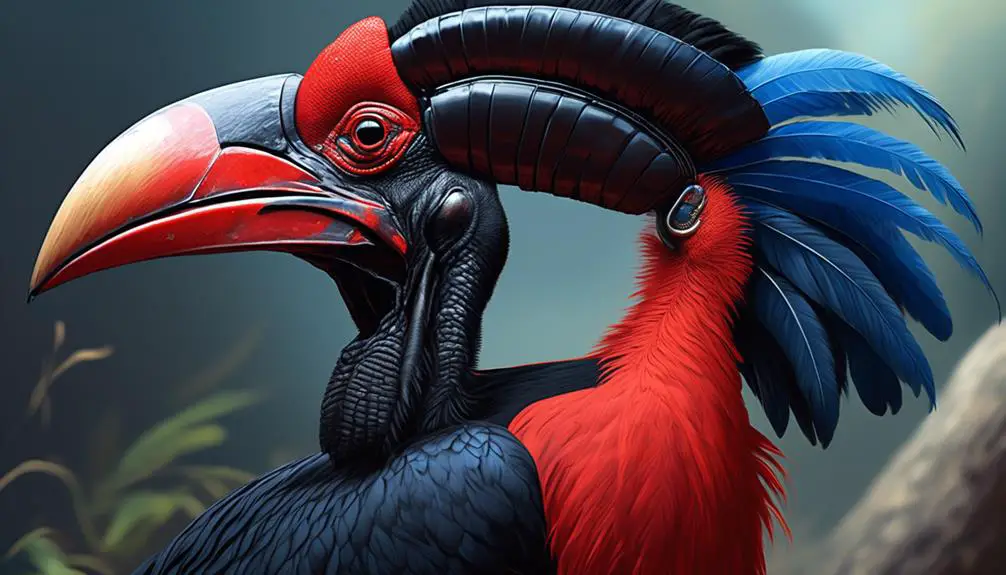
The Southern Ground Hornbill, scientifically known as Bucorvus Leadbeateri, is a large ground-dwelling bird found in various habitats across Africa. With a length of up to 39 inches and weighing around 13 to 15 pounds, it’s one of the largest hornbills in the world.
This unique bird is easily recognized by its striking appearance. Its plumage is predominantly black, with a glossy appearance, and it has bright red patches on its throat and face, which add a splash of color to its overall appearance. The Southern Ground Hornbill has a large, powerful bill that’s black and curved, allowing it to forage for food on the ground. Its long legs are sturdy and adapted for walking and running.
This species prefers woodlands and savannas, where it can find its primary diet of small mammals, reptiles, insects, and even other birds. The Southern Ground Hornbill is also known for its loud, booming call, which can be heard over long distances.
Despite its unconventional appearance, this magnificent bird plays an important role in its ecosystem as a top predator, helping to maintain a balance in the African savannas.
Turkey Vulture: Cathartes Aura
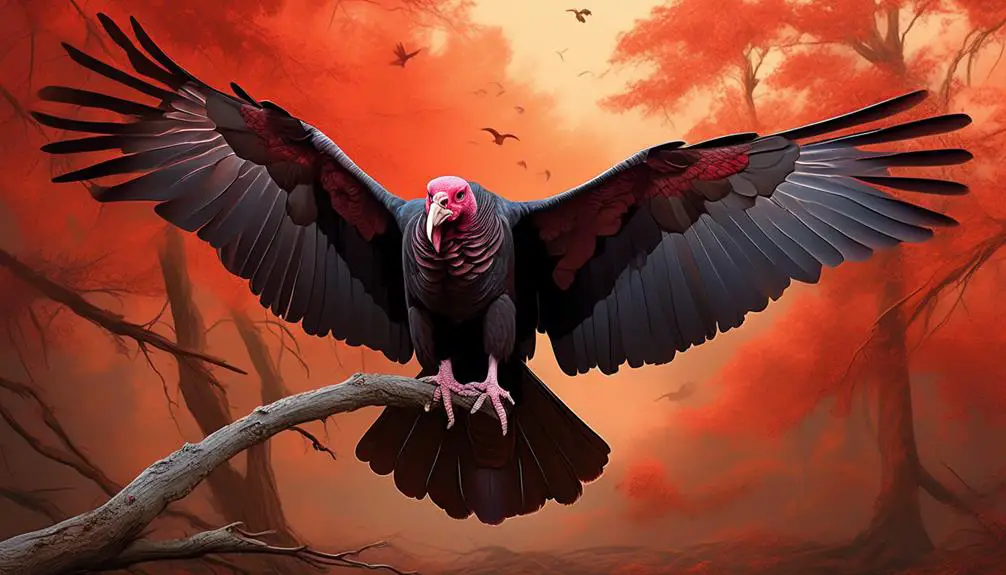
Turkey Vultures, scientifically known as Cathartes aura, are a widely distributed species found throughout the Americas, playing a vital role in maintaining the ecological balance as efficient scavengers. These birds have a distinct appearance that may not be considered attractive to some. Their large, black bodies are covered in feathers that have a mottled, brownish appearance, giving them a slightly unkempt look. The Turkey Vulture’s head is bald and red, with a hooked beak that is well-adapted for tearing into carrion. They have long, broad wings that enable them to soar effortlessly in the sky, utilizing thermal updrafts to search for their next meal. Despite their somewhat unappealing appearance, Turkey Vultures are highly specialized and skilled scavengers, feeding primarily on carrion. They play a crucial ecological role by cleaning up decaying animal carcasses, which helps to prevent the spread of disease. In fact, their digestive system is uniquely adapted to handle bacteria and toxins that would be harmful to other animals. This table provides a visual representation of the Turkey Vulture’s unique characteristics:
| Characteristics | Description |
|---|---|
| Appearance | Large, black body with mottled brown feathers |
| Head | Bald and red |
| Beak | Hooked and well-adapted for tearing into carrion |
| Wings | Long and broad, enabling effortless soaring |
While the Turkey Vulture may not be conventionally attractive, its role in the ecosystem is invaluable, making it a truly remarkable and essential species.

Erzsebet Frey (Eli Frey) is an ecologist and online entrepreneur with a Master of Science in Ecology from the University of Belgrade. Originally from Serbia, she has lived in Sri Lanka since 2017. Eli has worked internationally in countries like Oman, Brazil, Germany, and Sri Lanka. In 2018, she expanded into SEO and blogging, completing courses from UC Davis and Edinburgh. Eli has founded multiple websites focused on biology, ecology, environmental science, sustainable and simple living, and outdoor activities. She enjoys creating nature and simple living videos on YouTube and participates in speleology, diving, and hiking.
- WILDLIFE THEMED T-SHIRTS
Cute Hedgehog Embroidered: Love Wildlife, Protect Nature Wildlife conservation tees
$35.00

